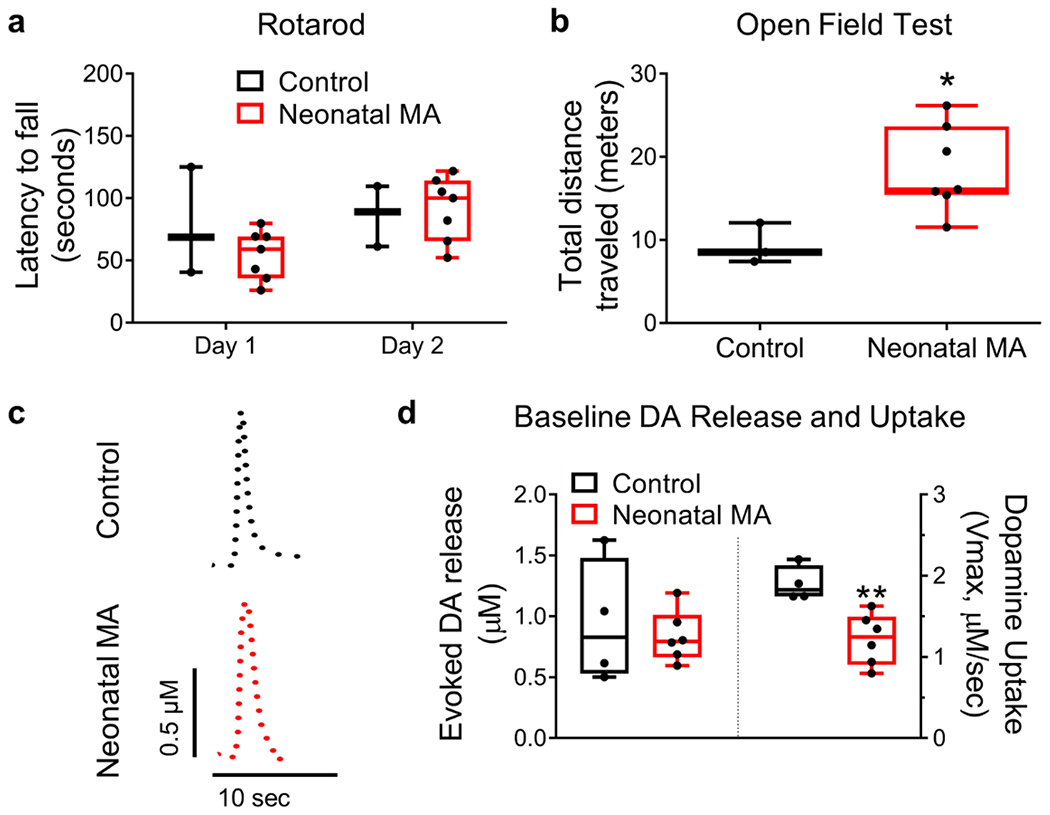Fig. 1.

Neonatal exposure to methamphetamine elevates locomotor activity and decreases dopamine uptake measured in the nucleus accumbens in adulthood. (a) No difference was detected between Neonatal MA and Control groups during the Rotarod Test. (b) C57 wild-type mice subcutaneously injected with methamphetamine (MA, 5mg/kg daily) during prenatal days 4-9 (Neonatal MA) traveled a greater distance on average (18.5 ± 2.0 meters) than vehicle-injected (Control) mice (9.3 ± 1.4 meters) during the Open Field Test. Mann-Whitney U test: *p = 0.024. (c) Representative evoked dopamine (DA) release traces from nucleus accumbens (NAc) brain slices measured with fast-scan cyclic voltammetry. (d) Neonatal exposure to MA had no significant impact on the amplitude of evoked DA. Kinetic modeling of DA release traces revealed that neonatal MA exposure caused a decrease in DA uptake rates (1.2 ± 0.1 μM/sec), represented by ‘Vmax,’ compared to the control group (1.9 ± 0.1 μM/sec). Mann-Whitney U test: **p = 0.0095. Boxplots show data as median, first and third quartiles, minimum and maximum values; ‘n’ of Control and Neonatal MA = 3 and 7 for behavioral data, and 4 and 6 for FSCV data.
